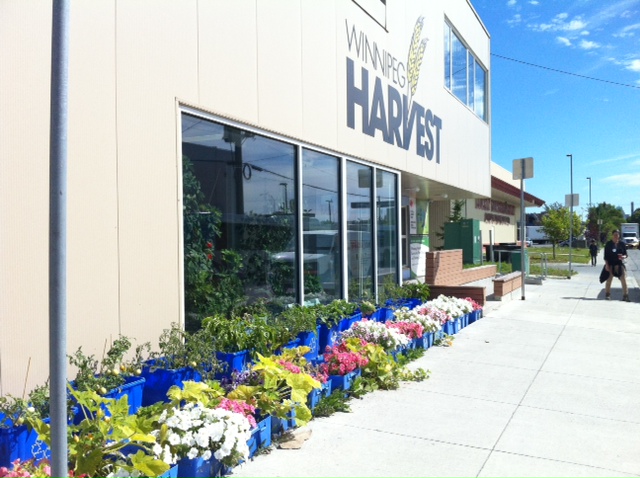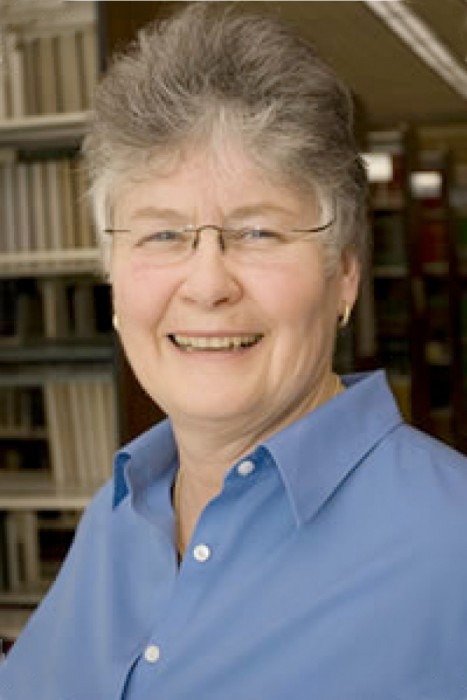
Students visited Winnipeg Harvest as part of Bannatyne Orientation 2013.
Bannatyne orientation and inner Winnipeg
Welcome to your profession, welcome to your neighbourhood!
For the past several years, Bruce Martin, doctor and associate dean (students) of the Faculty of Medicine at Bannatyne campus, showed a slide presentation to first-year medical classes in order to familiarize the students with “the neighbourhood they will be learning from and learning with,” as he puts it. Last year, the virtual introduction became reality when he and colleagues from the department of community health sciences organized a neighbourhood tour for orientation of medical students.
Fast forward to fall 2013. Not only has the orientation tour expanded to include most of the faculties at Bannatyne campus, but excitement about the experience is also growing amongst both students and faculty. This year’s inner Winnipeg neighbourhood tours included 202 students and various faculty members and support staff.
Offered this year as part of new student orientation, a program under student life, tours included three faculties (Dentistry, Medicine, Pharmacy) and the School of Dental Hygiene. Buses left from Bannatyne campus on scheduled neighbourhood circuits during the final weeks of August and the first week of September.
Among the goals of the tour are to familiarize and connect students with their inner Winnipeg neighbourhood — and with the neighbours and organizations with whom they’ll be working. Pedagogically, notes Martin, there’s an inherent connection between health care education and understanding the communities and populations that health care professionals serve.
Martin: Pedagogically, there’s an ‘inherent connection’ between health care education and understanding the communities and populations that health care professionals serve.
I joined the Faculty of Pharmacy for the final tour of Bannatyne Orientation 2013. The inner city circuit took us around the North End and Main Street areas — essentially a big loop to the north and east of Bannatyne Campus and made one stop to visit an organization.
Many neighbourhood locations were included in the circuit: from the U of M’s Inner City Social Work program at the William Norrie campus to Makoonsag, an intergenerational learning centre and daycare; from the WISH Clinic (an interprofessional clinic run by student-volunteers from U of M’s professional health programs) at Mt. Carmel Clinic to Neechi Commons; and from Siloam Mission, a Christian humanitarian organization that provides free services and programs to those affected by homelessness, to Sunshine House, a drop-in that offers basic support services and “serves street-involved and homeless people, many of whom have addictions and are affected by HIV and HCV.”
A number of the many cultural, social and community agencies that operate in these neighbourhoods are partnered in some way with the U of M’s faculties at both Fort Garry and Bannatyne campuses or the Inner City Social Work program.
Students I spoke with during and after the tour expressed their enthusiasm for the “hands-on” opportunity to learn about their new neighourhood. Many of the students will volunteer, do service learning or work at these organizations as part of their education.
In addition to a circuit of the neighbourhood, the site visit (we visited Winnipeg Harvest) allows for an intensive, half-hour tour of an organization’s facilities and an introduction to its mandate and activities. For the medical, pharmacy and dentistry students, the visit is an opportunity to tangibly grasp the principles of social accountability and service emphasized by professional health care education.

Sharon Macdonald, associate professor, department of community health sciences, Faculty of Medicine.
Sharon Macdonald, doctor and associate professor, department of community health sciences, notes that the first-year student tours are an important introduction to various pedagogical principles as well. Inner Winnipeg organizations provide programs critical to people’s well-being, services to which doctors need to refer, she says.
As future health care professionals, they need to “understand the diversity of populations, celebrate and work with their strengths and understand the impact of social and other determinants on health,” she adds. For example, she lists the issue of secure food sources — the availability of food and access to it; one effect of poverty can be a lack of food security, which, in turn, affects health.
As Martin suggests, health care workers need to be sensitive to and educated about “the broadest determinants of well-being,” while “seeing themselves as a member of their neighbourhood,” with a social responsibility to that community. They will also often “work alongside or in collaboration with other health and social services within a particular community,” he says.
“The Bannatyne campus is embedded in this vibrant and diverse neighbourhood so it’s important that we, as health care professionals and future health care professionals, understand ourselves to be a part of it here,” he says.
“To new students, we want to say, ‘welcome to your neighbourhood.’”
The Bannatyne campus Orientation for inner-Winnipeg neighbourhood tours partnered with the U of M Inner City Social Work Program and the following organizations in their community: Winnipeg Harvest, Siloam Mission, North End Women’s Centre, Immigrant and Refugee Community Organization of Manitoba (IRCOM) and Makoonsag Intergenerational Children’s Centre.
The tours were supported by the department of community health sciences, the Alan Klass Memorial Program for Health Equity and the undergraduate medical education program (all Faculty of Medicine), student life office and services for students — Bannatyne campus. Bryan Payne in undergraduate medical education looked after logistics; Sharon Macdonald and Karen Cook contacted the agencies, organized the route and facilitated tours.
This article first appeared in the September 12, 2013 edition of The Bulletin.







